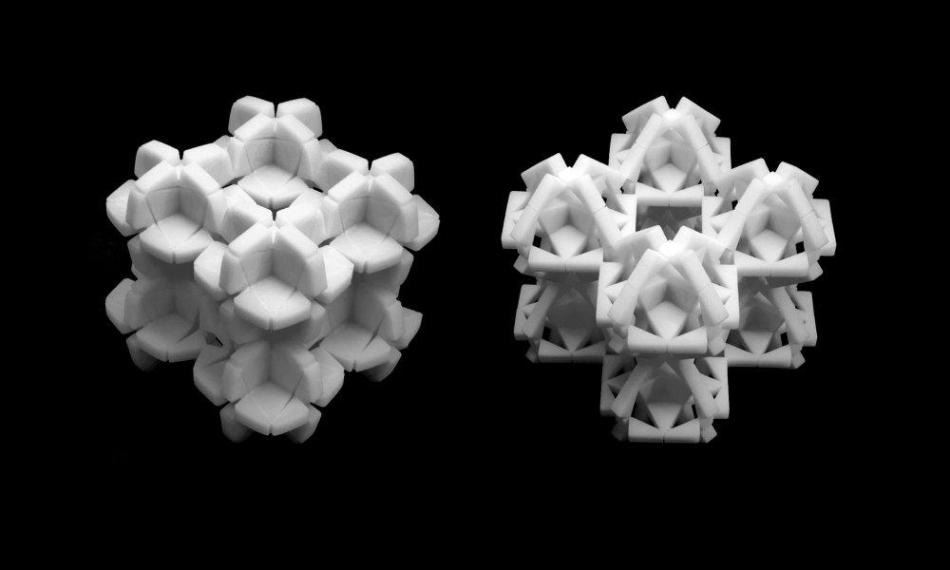Feb 5 2018
Research into the field of metamaterials, designed to comprise of strange properties like being able to change their stiffness or shape, has progressed a great deal during recent years in technologies such as computer simulation, 3D printing and a few conceptual innovations.
This subject is gaining such immense importance that it was featured on the cover of Nature Reviews Materials, along with an article on the challenges facing flexible mechanical metamaterials (featuring scientists from the Universidad Carlos III de Madrid (UC3M), the University of Chicago, Harvard University and Leiden University, The Netherlands).
 Shape-reconfigurable metamaterials are capable of achieving significant morphological change upon application of loads and maintaining the desired shape when the loading is removed. (Image credit: Universidad Carlos III de Madrid)
Shape-reconfigurable metamaterials are capable of achieving significant morphological change upon application of loads and maintaining the desired shape when the loading is removed. (Image credit: Universidad Carlos III de Madrid)
“Mechanical metamaterials have properties that cannot be realized in conventional materials,” stated one of the study’s authors, Johan Christensen, from the UC3M department of Materials Science and Engineering and Chemical Engineering.
In this article, the researchers reviewed the very latest scientific studies in this area. “These metamaterials exhibit exotic functionalities, such as pattern and shape transformations in response to mechanical forces,” the study reveals. An example refers to the structures based on origami or kirigami.
An increased number of scientific studies presently being performed target the design of new topological metamaterials capable of possessing an adjustable refraction index. This would permit the changing and guiding the direction of the waves, which indeed opens the door to materials capable of diverting visible light waves and attaining a specific range of invisibility.
In this study, the researchers have also examined some of the challenges experienced by the scientists working in this field, such as the impact of some technologies that are presently being produced, such as laser cutting and 3D printing. "Many of these techniques are still in their early stages,” he observed, but they open up the possibility of merging materials with particular functionalities in order to attain hybrid metamaterials with “optomechanical, thermomechanical or electromechanical properties.”
Johan Christensen performs this line of research on metamaterials inside the framework of a broader scientific project, a Horizon 2020 ERC Starting Grant funded by the European Union (GA 714577) named “Frontiers in Phononics: Party-Time Symmetric Phononic Metamaterials” (PHONOMETA). The objective of the project focuses on the analysis and design of a new generation of metamaterials centered on piezoelectric semiconductors that permits highly unusual sound propagation, which should allow submarines to behave acoustically invisible to sonar.